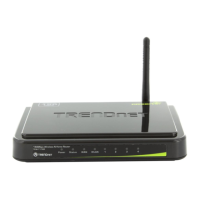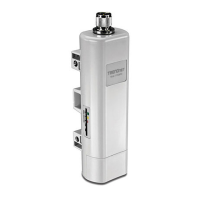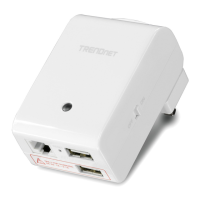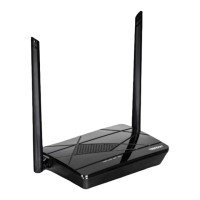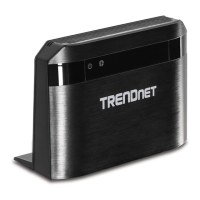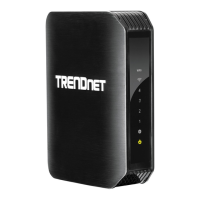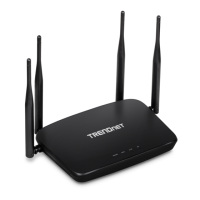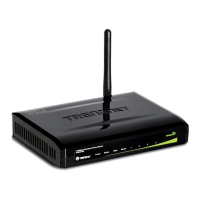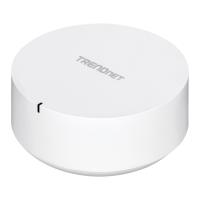© Copyright 2013 TRENDnet. All Rights Reserved.
TRENDnet User’s Guide
TEW-718BRM
46
Special Applications
Advanced > NAT > Special AP
Special applications (also called port triggering) is typically used for online gaming
applications or communication applications that require a range of ports or several
ports to be dynamically opened on request to a device on your network. The router will
wait for a request on a specific port or range of ports (or trigger port/port range) from a
device on your network and once a request is detected by your router, the router will
forward a single port or multiple ports (or incoming port/port range) to the device on
your network. This feature is not typically used as most devices and routers currently
use UPnP (Universal Plug and Play) to automatically configure your router to allow
access for applications. See “Enable/disable UPnP on your router” on page 41
.
Note: Please refer to the device documentation to determine if your device supports
UPnP first, before configuring this feature.
1. Log into your router management page (see “Access your router management page”
on page 35
).
2. Click on Advanced, click on NAT, and click on Special AP.
To simplify configuration, there is a list of commonly used pre-defined special
application entries to modify by clicking the Popular applications drop-down list,
otherwise, you can choose to manually add a new special application.
3. Review the special application settings.
• Trigger – Port or port range requested by the device.
(e.g. 2000-2001 or 2000)
Note: Please refer to the device documentation to determine which ports are
required.
• Incoming Ports – Port(s) forwarded to the device.
(e.g. 2000-2038,2069,2081,2200-2210)
Note: Please refer to the device documentation to determine which ports are
required.
• Enable – Checking the Enable option turns on the special application.
Note: Please refer to the device documentation to determine which ports are required.
4. To save changes, click Apply.

